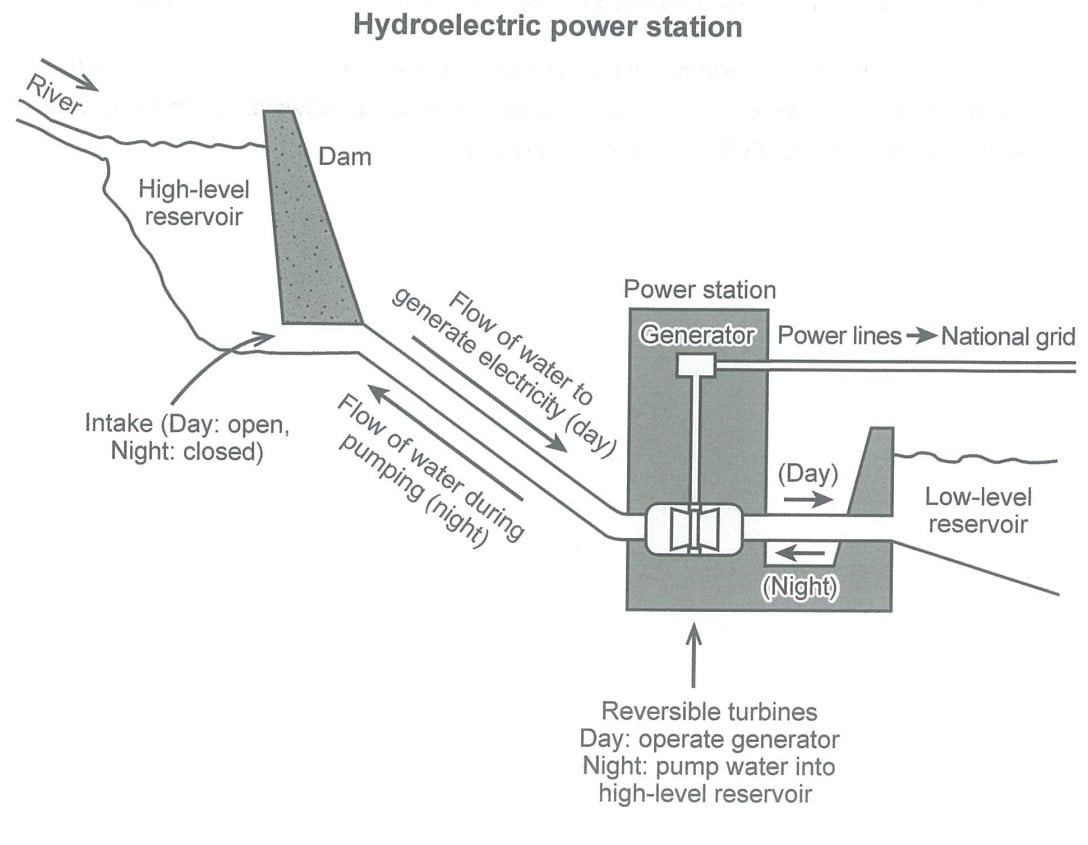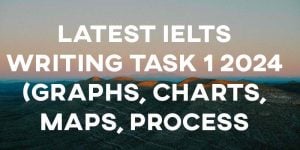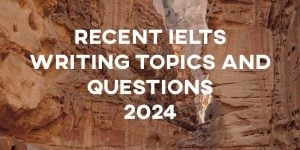This is an IELTS Writing Task 2 Sample Answer from the IELTS Cambridge 14 book of past sample tests and it is a process describing a hydroelectric power station.
Interesting stuff…
Processes are a bit tricky both in terms of the general overview and the structure of the writing.
I find it really hard to write enough words about a process. They are really simple to describe and you can often end up short of the word count.
Your writing might also sound mechanical if you just follow it step by step without giving an overall picture of the process.
For most processes, you will also need to use more of the passive voice than you are used to.
There are a lot of complex moving parts in a process – just like in a hydroelectric power station!
Read on to see how I handled it!
You can find more of my task 1 sample answers here.
And my task 2 sample answers here.
Finally, here is everything that you need to know to practice well with IELTS Cambridge 14.
Consider supporing my efforts to write these essays but signing up for my exclusive IELTS Ebooks here on Patreon.
Dave
IELTS Writing Task 1 Sample Answer: Map Hydroelectric Power Station (IELTS Cambridge 14)

The diagram below shows how electricity is generated in a hydroelectric power station. Summarise the information by selecting and reporting the main features, and make comparisons where relevant.
The process shows how electricity is generated in a hydroelectric power station. In general, the diagram can be broadly separated into day and night stages with the daylight stages involving the generation of electricity from a river and storage of water in a reservoir. At night the water flows back in the other direction towards an initial reservoir and the river.
The first stage of the process involves channelling the river into a high-level reservoir backed up by a dam. There is an intake area leading to the power station that is open during the day and closes at night. Water flows during the day to generate electricity through the power station turbines and the resulting electricity is sent to a national grid through power lines while the water then continues to a low-level reservoir.
The reversible turbines that operate the generator during the day allow the station to pump the water in the low-level reservoir back into the high-level reservoir for use the next day.







Hi dave,
At this sentence
“electricity is sent to a national grid through power lines while the excess water runs to a low-level reservoir.”
You said that excess water runs to a low-level reservoir.
But it is not the EXCESS water actually WHOLE water runs to low-level reservoir.
Hmmm, I see what you mean but isn’t a lot of the water being used to run the generator and then some of it is going to the resevoir?
No
Actually, Whole water pass through turbine ( turbine is connected to generator) and then leave the turbine and flow into reservoir.
Yes, I see.
The diagram depicts the processes involved and the workings of a Hydroelectric power station. There are 2 main structures that assist in the production of electricity, the dam that holds off the river water and the power station that converts the flow of water to produce electricity. Another important aspect to note is the forward and backward flow of water during day and night.
The river water is collected in a High-level reservoir which is walled off by a Dam. An Intake at the bottom of the Dam is open during the day, letting the water flow to the power station, where it passes through a reversible turbine, moving finally into a low-level reservoir. This turbine is connected to a Generator and the turning of the turbine allows the generator to create electricity which is supplied to the National grid via power lines.
At Night, the intake below the dam is closed and the turbine is run in reverse, in effect pumping the water from the low-level reservoir back to the high-level reservoir.
Well done, Yas!
Really good overview – you don’t have to capitalise so much in your writing – just proper nouns.
Thank you for the feedback
You’re very welcome!
need help to get corrected the answers which I am writing for task 1
Sure, Adhini – send me a message!
I have a PRETTY DAMN serious question,
What kind of this dam is who works in the REVERSED way?? I watched many documentaries and did not notice this kind of BIZAR dam. I know it’s just the IELTS test but I mean still WTF my brain is melting on these illogical examples.
Hahah, great question – I don’t know anything about dams – maybe you could write a critique!
I have 2 things to mention.
1. You have written “ turbines that operate the generator during the day allow the station to pump the water in the low-level reservoir back into the” in last paragraph, it should be corrected as “during the night” isn’t it ?
2. As the question mentioned the intake is closed during the night, then how the water goes back to the high-level reservoir? Given there is no alternative tunnels.
Thanks for the comment, Chathura!
1. It is correct as it is – they do that during the day and then later have another purpose.
2. It is a little confusing but it does show the water going in that direction at night – maybe a mistakes in the diagram.
To embark on, the data given above unveils the mechanism of electricity production by means of a hydroelectric power station. Initially, water from the river is preserved in a high level reservoir being blocked by a dam. An intake is resent in the dam for the ejection and backward projection of water, it is open during day but closed during night. Subsequently, at daytime the water goes down through a pipeline, which is also used at night in the backward flow of water to the river.
Afterwards, the water from the pipeline enters a power station, where it is utilized to run a turbine, which empowers a generator at day time while pumps water upward during night. In addition, the generator is derived by the moving turbine blades. Furthermore, the electricity produced from the generator is sent to the National grid via power lines. Meanwhile, the water from turbine is stored in a low-level reservoir.
In contrast, at night the process is totally reversed and the water is pumped to the higher reservoir, the water goes through the turbines and all the way up to the river to harness it again.
The diagram below details the process of hydroelectricity production in a power station looking from an overall perspective, it is clear that this is a man-made cyclical process comprised of two stages overall. during the day water currents come toward generators with the help of Earth’s gravity and electricity is produced and delivered to National Grid. In contrast, during the night time, the water is pumped upward to a high-level reservoir by reversible turbines.
The hydroelectricity production commences by accumulating the river water in a high-level reservoir behind the Dam. during the day, (the first stage) intakes are open, and based on gravity this water flowed downside to the generators and causes the generators to work. then, the produced electricity is delivered to the national grid via power lines. moreover, the water which passes through the turbines saves in a low-level reservoir. in contrast, in the next stage (during the night) water that is saved in the low-level reservoir reaches the reversible turbines. next, it is pumped toward the high-level reservoir and accumulated there to be used the next day for the first stage again.